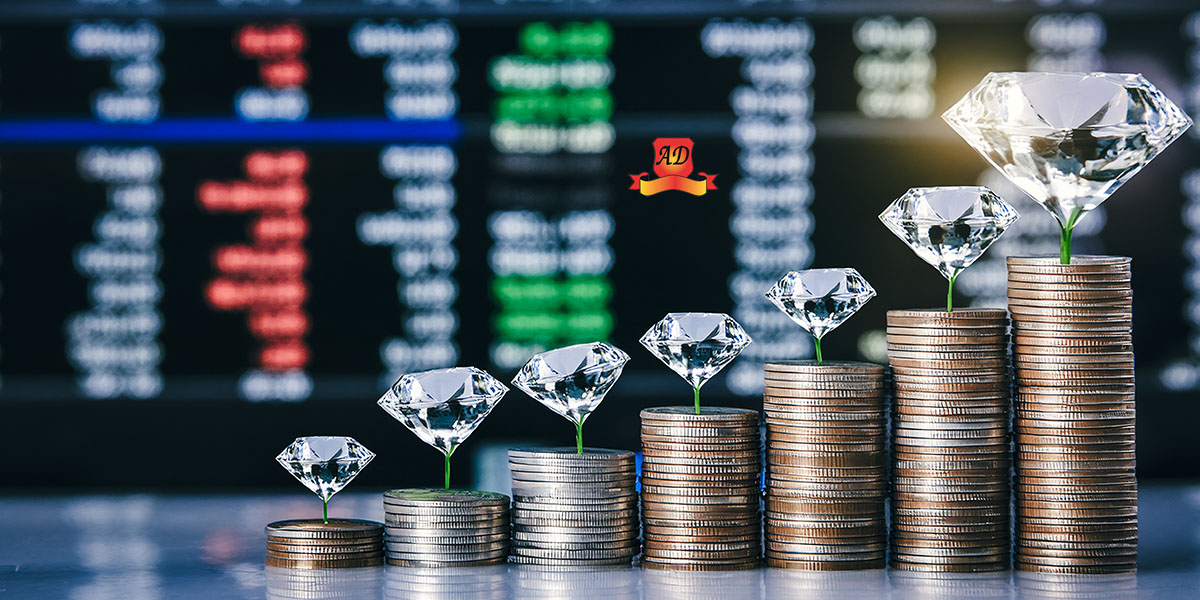Maintaining ahead of the curve in the always changing diamond business calls for thorough knowledge of global economic trends and how they affect the market. Tracking these patterns is for accurate pricing, sourcing, and sales for diamond manufacturers. The diamond market is quite sensitive to swings in the state of the world, hence these developments immediately influence the value of diamonds. This blog explains about 5 ways to track global economic trends that impacts diamond evaluation and offers certified diamond dealers and manufacturers ideas to keep competitive in the market.
Maintaining ahead of the curve in the always changing diamond business calls for thorough knowledge of global economic trends and how they affect the market. Tracking these patterns is for accurate pricing, sourcing, and sales for diamond manufacturers. The diamond market is quite sensitive to swings in the state of the world, hence these developments immediately influence the value of diamonds.
This blog explains about 5 ways to track global economic trends that impacts diamond evaluation and offers certified diamond dealers and manufacturers ideas to keep competitive in the market.
1. Monitor Currency Fluctuations and Inflation Rates
Two of the most important global economic trends that impact diamond evaluation are swings in currency values and inflation rates. International trading of diamonds is common, therefore the price of diamonds is much influenced by the value of currencies such the US dollar, the euro, and others. For customers using foreign currencies, a strong U.S. dollar, for example, increases the cost of diamonds, therefore lowering demand. On the other hand, a weak dollar might make diamonds more reasonably priced for foreign purchasers, therefore increasing demand and raising prices.
Manufacturers of diamonds have to pay great attention to the changes in prices and currency rates among main markets. In a big consumer market, depreciation of a currency might lead to reduced demand or sales, which could finally influence the price evaluation of diamonds. GIA Certified diamond dealers with worldwide customers also have to know how these changes affect their pricing policies.
2. Keep an Eye on Consumer Spending Trends
Another significant global economic factor affecting diamond evaluation is consumer buying patterns. Demand for luxury items, especially diamonds, usually increases when people have hope for the state of the economy. Demand for luxury jewelry and diamonds depends on elements such as employment rates, disposable income, and general consumer confidence. On the other hand, an economic crisis causes lower spending, which directly affects the demand for diamonds.
Tracking consumer purchasing trends in important areas such as the United States, China, and India is vital for diamond manufacturers. These nations account for extremely large amounts of world diamond demand. Certified diamond dealers can predict changes in demand and modify their inventory and price policies by using consumer behavior data analysis.
3. Study Global Trade Policies and Tariffs
Global economic trends that directly impact diamond evaluation are trade policy and taxes. With raw diamonds mined in one area, cut and polished in another, and sold across various markets, the diamond business is very globalized. The diamond supply chain may be greatly changed by changes in trade regulations like new tariffs or import/export restrictions.
Monitoring world trade agreements and policies is crucial for diamond makers. Any changes in trade rules between important diamond-producing nations and consumer markets might impact supply costs, which in turn influences diamond assessment and pricing. Higher expenses for producers, for instance, resulting from more taxes on imported diamonds would eventually be passed on to consumers. Certified diamond dealers should also keep current with trade rules to guarantee compliance and modify prices based on their compliance level.
4. Analyze Interest Rates and Investment Trends
The formation of global economic trends that impact diamond evaluation depends much on interest rates and investment patterns. Low interest rates cause investors to look for other kinds of insurance against inflation, such jewels and precious stones. On the other hand, rising interest rates can cause investors to return to conventional financial markets, therefore lowering demand for diamonds as investment vehicles.
Changes in interest rates and their impact on investor behavior should be of great relevance to diamond manufacturers. Diamonds are sometimes seen as a steady investment in times of inflation or economic instability, which would boost demand and raise their value. Understanding these investing patterns helps diamond dealers to provide consumers looking for diamonds as a safe and valuable asset.
5. Track Political Stability and Geopolitical Events
Political instability, disputes, or sanctions in nations that produce diamonds can throw off the supply chain and cause shortages, therefore driving up the diamond price. As a diamantaire we are witnessing that the ongoing war is the major factor affecting the diamond industry. Likewise, economic sanctions applied by big countries can influence trade paths and availability of materials necessary for diamond production. This would lead to supply chain constraints, which would eventually affect the worldwide evaluation and diamond pricing. Manufacturers and certified diamond dealers must be current with world political events in order to forecast and reduce supply interruptions-related risks.
The diamond business is closely interlinked with the world economy, hence effective diamond appraisal depends on watching global economic trends. Maintaining knowledge of currency changes, consumer behavior, trade policies, interest rates, and political stability can help certified diamond dealers understand how these elements impact diamond evaluation. Through constant observation of these 5 main areas, diamond companies may make wise decisions that improve their profitability and guarantee long-term viability in a market always shifting.
Knowing how global economic trends affect diamond evaluation will enable you not only to negotiate changes in the economy but also seize chances when they present themselves. Being proactive in following these trends will help you to have a competitive advantage in the diamond business whether it comes to modifying your pricing strategy depending on changes in currency values or getting ready for trade rules.
For more information, contact Anita Diamonds- the best GIA certified diamond dealer in Belgium.




